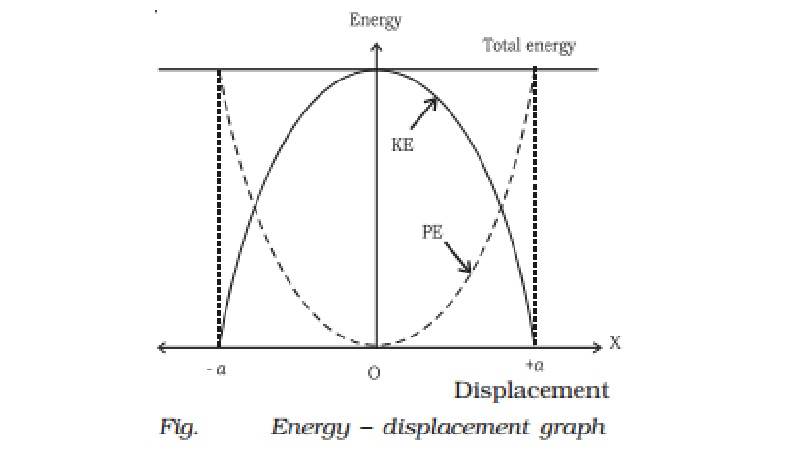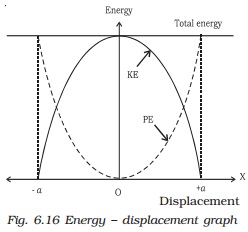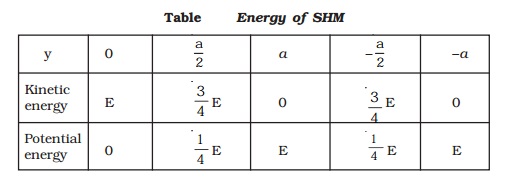Chapter: 11th 12th std standard Class Physics sciense Higher secondary school College Notes
Kinetic and Potential in simple harmonic motion

Energy in simple harmonic motion
The total energy
(E) of an oscillating particle is equal to the sum of its kinetic energy and
potential energy if conservative force acts on it. The velocity of a particle
executing SHM at a position where its displacement is y from its mean position
is v = ω rt( a2-y2)
Kinetic energy
Kinetic energy
of the particle of mass m is
K = ? n [ω rt( a2-y2)
]
K = ? m [ω2
( a2-y2) ]
?.(1)
Potential energy
From definition
of SHM F = ?ky the work done by the force during the small displacement dy is
dW = −F.dy = −(−ky) dy = ky dy
∴
Total work done for the displacement y is,
W = ∫ dW = ∫0y ky dy
W = ∫0y mω2 y dy
∴W
= 1/ 2 m ω2 y2
This work done
is stored in the body as potential energy
U = 1 /2 m ω2
y2
Total energy E =
K + U
= 1/ 2 mω2
(a2 − y2) + 1/ 2 m ω2 y2
= 1/ 2 m ω2
a2
Thus we find that the total energy of a
particle executing simple harmonic motion is 1 /2 m ω2 a2
Special cases
(i)When the
particle is at the mean position y = 0, from eqn (1) it is known that kinetic
energy is maximum and from eqn. (2) it is known that potential energy is zero.
Hence the total energy is wholly kinetic
E=Kmax = 1/ 2 mω2a2
(ii) When the
particle is at the extreme position y = +a, from eqn. (1) it is known that
kinetic energy is zero and from eqn. (2) it is known that Potential energy is
maximum. Hence the total energy is wholly potential.
E = Umax
= ? m ω2 a2
(iii)when y =
a/2 ,
K = 1 /2 m ω2
[a2 - a2/4]
∴K
= ?(1/2mω2 a 2)
K = 3 /4 E
U = 1/2 mω2
(a 2/2) = ?(1/2 mω2 a 2)
U = 1/4E
If the
displacement is half of the amplitude, K = 3/ 4 E and U = 1 /4 E. K and U are
in the ratio 3 : 1,
E=K+U=1/2 mω2
a 2
At any other
position the energy is partly kinetic and partly potential.
This shows that
the particle executing SHM obeys the law of conservation of energy.
Graphical representation of energy
The values of K
and U in terms of E for different values of y are given in the Table 6.2. The
variation of energy of an oscillating particle with the displacement can be
represented in a graph as shown in the Fig..


Energy of SHM
Y : 0 a/2 , a , -a/2 , -a
Kinetic energy :
E , ? E , 0 ? E, 0
Potential energy
: 0 , 1/4E, E , 1/4E , E
Related Topics